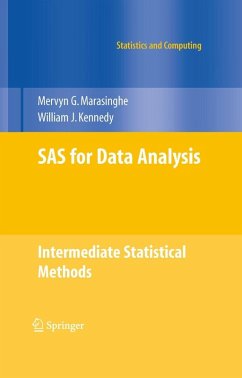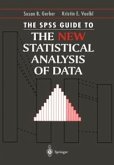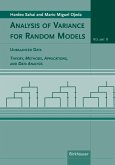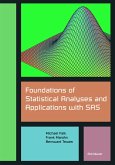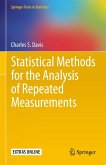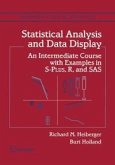This book is an integrated treatment of applied statistical methods, presented at an intermediate level, and the SAS programming language. It serves as an advanced introduction to SAS as well as how to use SAS for the analysis of data arising from many different experimental and observational studies. While there are many introductory texts on SAS programming, statistical methods texts that solely make use of SAS as the software of choice for the analysis of data are rare. While this is understandable from a marketability point of view, clearly such texts will serve the need of many thousands of students and professionals who desire to learn how to use SAS beyond the basic introduction they usually receive from taking an introductory statistics course. More recently, several authors in statistical methodology have begun to incorporate SAS in their texts but these books are limited to more specialized subjects.
Many of the standard topics covered in statistical methods textssupplemented by advanced material more suited for a second course in applied statistics are included, so that specific aspects of SAS procedures can be illustrated. Brief but instructive reviews of the statistical methodologies used are provided, and then illustrated with analysis of data sets used in well-known statistical methods texts. Particular attention is devoted to discussions of models used in each analysis because the authors believe that it is important for users to have not only an understanding of how these models are represented in SAS but also because it helps in the interpretation of the SAS output produced.
Mervyn G. Marasinghe is Associate Professor of Statistics at Iowa State University where he teaches several courses in statistics and statistical computing and a course in data analysis using SAS software. A former Associate Editor of the Journal Computational and Graphical Statistics, he has used SAS software for more than 30 years.
William J. Kennedy is Professor Emeritus of Statistics at Iowa State University. A Fellow of the American Statistical Association and former Editor of The American Statistician and Journal of Computational and Graphical Statistics, he is coauthor of the book entitled Statistical Computing.
Many of the standard topics covered in statistical methods textssupplemented by advanced material more suited for a second course in applied statistics are included, so that specific aspects of SAS procedures can be illustrated. Brief but instructive reviews of the statistical methodologies used are provided, and then illustrated with analysis of data sets used in well-known statistical methods texts. Particular attention is devoted to discussions of models used in each analysis because the authors believe that it is important for users to have not only an understanding of how these models are represented in SAS but also because it helps in the interpretation of the SAS output produced.
Mervyn G. Marasinghe is Associate Professor of Statistics at Iowa State University where he teaches several courses in statistics and statistical computing and a course in data analysis using SAS software. A former Associate Editor of the Journal Computational and Graphical Statistics, he has used SAS software for more than 30 years.
William J. Kennedy is Professor Emeritus of Statistics at Iowa State University. A Fellow of the American Statistical Association and former Editor of The American Statistician and Journal of Computational and Graphical Statistics, he is coauthor of the book entitled Statistical Computing.
Dieser Download kann aus rechtlichen Gründen nur mit Rechnungsadresse in A, B, BG, CY, CZ, D, DK, EW, E, FIN, F, GR, HR, H, IRL, I, LT, L, LR, M, NL, PL, P, R, S, SLO, SK ausgeliefert werden.
From the reviews:
"The authors have presented an exceptionally detailed and complete guide to using SAS to read and process data, make tables and plots, and fit linear models with fixed, random, or mixtures of fixed and random components. All procedures are illustrated with numerous data examples, and both the SAS commands and the output are explained in meticulous detail. And as one would expect, all of the data and SAS code used in the book may be downloaded from a website. . . . for a student who needs to learn the details of using SAS to process data and fit classical linear models, this book would make an excellent choice." (Dirk F Moore, Journal of Biopharmaceutical Statistics (JBS), Issue #5, 2009)
"The authors provide an easily readable introduction into the SAS language, some of its basic statistical methods, and many applications for statistical linear modeling. . . .Very helpful are the many exercises in each chapter which make this book valuable for teaching at universities and colleges. . . . As of today, almost all test examples and data sets are available from the Web page accompanying the book." (Wolfgang M. Hartman, Journal of Statistical Software, Vol. 28, October 2008)
"The authors have presented an exceptionally detailed and complete guide to using SAS to read and process data, make tables and plots, and fit linear models with fixed, random, or mixtures of fixed and random components. A ll procedures are illustrated with numerous data examples, and both the SAS commands and the output are explained in meticulous detail. And as one would expect, all of the data and SAS code used in the book may be downloaded from a website. ... But for a student who needs to learn the details of using SAS to process data and fit classical linear models, this book would make an excellent choice. " (Dirk F. Moore, Journal of Biopharmaceutical Statistics, 2009, Issue 5)
"Many universities offer graduate courses in applied statistics where the emphasis is on regression and design of experiments. These courses typically attaché individuals from a wide array of disciplines with the purpose being to equip students with some of the essentials of data analysis. Typically students have been exposed to one or more point-and-click statistical software packages along the way in their statistical training but their exposure to programming-sophisticated packages such as R and SAS is at best, limited. The authors of this text clearly have a great deal of experience teaching these types of applied statistics courses as they have put together a fine text. ...The text is carefully written and well organized. The introduction to the SAS language is one of the best that I am aware of. ...Owners of this book will be happy to have it on their shelf." (The American Statistician, May 2010, Vol. 64, No. 2)
"This book illustrates how to use the SAS system for data analysis. ... The book can be used as a textbook in an applied statistics course that covers the topics in multiple regression and analysis of variance and requires the use of SAS for performing statistical analysis. It can also be used as a reference by researchers and data analysts in the academic setting or industry for conducting statistical analysis using SAS." (Weiming Ke, Technometrics, Vol. 53 (1), February, 2011)
"The authors have presented an exceptionally detailed and complete guide to using SAS to read and process data, make tables and plots, and fit linear models with fixed, random, or mixtures of fixed and random components. All procedures are illustrated with numerous data examples, and both the SAS commands and the output are explained in meticulous detail. And as one would expect, all of the data and SAS code used in the book may be downloaded from a website. . . . for a student who needs to learn the details of using SAS to process data and fit classical linear models, this book would make an excellent choice." (Dirk F Moore, Journal of Biopharmaceutical Statistics (JBS), Issue #5, 2009)
"The authors provide an easily readable introduction into the SAS language, some of its basic statistical methods, and many applications for statistical linear modeling. . . .Very helpful are the many exercises in each chapter which make this book valuable for teaching at universities and colleges. . . . As of today, almost all test examples and data sets are available from the Web page accompanying the book." (Wolfgang M. Hartman, Journal of Statistical Software, Vol. 28, October 2008)
"The authors have presented an exceptionally detailed and complete guide to using SAS to read and process data, make tables and plots, and fit linear models with fixed, random, or mixtures of fixed and random components. A ll procedures are illustrated with numerous data examples, and both the SAS commands and the output are explained in meticulous detail. And as one would expect, all of the data and SAS code used in the book may be downloaded from a website. ... But for a student who needs to learn the details of using SAS to process data and fit classical linear models, this book would make an excellent choice. " (Dirk F. Moore, Journal of Biopharmaceutical Statistics, 2009, Issue 5)
"Many universities offer graduate courses in applied statistics where the emphasis is on regression and design of experiments. These courses typically attaché individuals from a wide array of disciplines with the purpose being to equip students with some of the essentials of data analysis. Typically students have been exposed to one or more point-and-click statistical software packages along the way in their statistical training but their exposure to programming-sophisticated packages such as R and SAS is at best, limited. The authors of this text clearly have a great deal of experience teaching these types of applied statistics courses as they have put together a fine text. ...The text is carefully written and well organized. The introduction to the SAS language is one of the best that I am aware of. ...Owners of this book will be happy to have it on their shelf." (The American Statistician, May 2010, Vol. 64, No. 2)
"This book illustrates how to use the SAS system for data analysis. ... The book can be used as a textbook in an applied statistics course that covers the topics in multiple regression and analysis of variance and requires the use of SAS for performing statistical analysis. It can also be used as a reference by researchers and data analysts in the academic setting or industry for conducting statistical analysis using SAS." (Weiming Ke, Technometrics, Vol. 53 (1), February, 2011)

